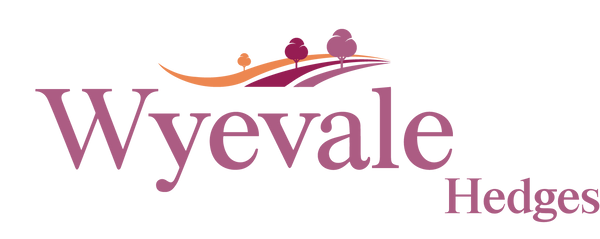Hedging Plants
A good hedging plant should have a naturally bushy and multi-stemmed growth habit rather than relying on a single leader. It must respond well to trimming, producing dense, regenerative branching that thickens over time. Ideal species tolerate frequent pruning without weakening and have lateral branching that fills gaps quickly. The ability to form a compact, uniform structure is crucial, ensuring a hedge remains effective as a barrier or screen.
Bareroot is the most cost effective way of planting hedges
All our plants are naturally conditioned to the British outdoors

Bareroot is the most enviromentally friendly way of growing
Container plants can be planted any time in the year and can be stored on site indefinitely
Recommended
 California Privet
California PrivetA landscapers favourite with glossy oval shaped green leaves, white spring flowers and a dense upright structure.
 Dogwood
DogwoodVibrant red stems in winter and clusters of white flowers in spring, rich hues of purple, orange and red in the fall. Dogwood is a show of colours.
 Sweet Chestnut
Sweet ChestnutSweet Chestnut is a fast growing multi-purpose hedge with delicious nuts, broad canopy and glossy, serrated leaves. It provides a valuable source of nutrients to wildlife
 Hazel
HazelCommon Hazel makes an excellent choice for informal hedges or woodland gardens. Hazel produces an abundance of nutritious nuts for animals in the cold months
 Cherry Laurel
Cherry LaurelFew species are functional and stunning as Cherry Laurel. The ones grown at Wyevale are taken from dense and bushy mother stock plants we have been cultivating specially
Why Choose Bare Root Plants?
Low cost
Bare root hedging offers significant cost savings due to its compact, soil-free bundling. This reduces both space requirements and transportation costs, making it a highly economical option for large-scale planting projects
Minimal Effort
Bare root planting is one of the most straightforward methods for establishing a hedgerow. The lightweight, loose-root plants are easy to handle and can be effortlessly placed into a pre-dug trench, without the need to remove pots. With the appropriate tools, they can even be planted mechanically, further reducing labor costs
Root health and establishment
Because bare root plants are free of soil, they allow for direct inspection of the roots, ensuring that only the healthiest plants are selected. During planting, their roots spread naturally, which promotes better establishment and minimizes the risk of root circling. Additionally, bare root plants experience less transplant shock compared to container-grown plants, resulting in higher survival rates and quicker adaptation. This makes them ideal for both commercial and residential applications
Sustainability and environmental impact
Choosing bare root plants is an environmentally responsible option, as it eliminates the need for plastic pots and peat-based compost. This reduces plastic waste and the environmental impact associated with peat extraction. By opting for bare root plants, you support sustainable horticultural practices and contribute to lowering the carbon footprint of plant production and transportation
Superior adaptability and growth rate
Bare root plants often exhibit superior growth compared to their containerized counterparts, particularly in the first few years after planting. They adapt quickly to their new environment and demonstrate vigorous growth, enabling landscapers to achieve desired results more rapidly. This accelerated growth also supports quicker ecological restoration and habitat creation, making bare root plants an excellent choice for both aesthetic and environmental projects.
Shop Bare Root Hedges and More
In addition to our range of bare root hedges, we offer a diverse selection of container hedges and forestry options
Plant Healthy Certified
Free dispatch date
Famly business since 1930
Quality guarentee
FAQs
When is the best time to plant bare root hedges?
The best time to plant bare root plants is during their dormant season, typically from late autumn to early spring (November to March in temperate climates). Planting during dormancy reduces transplant shock, allowing the plants to establish roots without the stress of supporting leaves or flowers.
Avoid planting when the ground is frozen or waterlogged, as these conditions can damage roots and hinder their ability to absorb water and nutrients. Choose a calm, mild day for planting to minimise stress on the plants, avoiding extreme weather like heavy rain, strong winds, or frost.
Bare root is the easiest way to plant in a hedgerow. The plants in their loose root form can be easily slotted into a pre-dug trench, they are much lighter without a ball of soil and do not need to be removed from a pot. With proper equipment, the trees can even be planted in by machine.
How do I prepare the soil for bare root hedging?
Prepare the soil by ensuring it is well-drained, loose, and enriched with organic matter if needed. Proper soil preparation enhances root penetration and access to nutrients and water, which are vital for successful establishment.
How long do bare root plants last?
Bare root plants can survive for up to ten days without extra nutrients or water, and can endure indefinitely in temperatures below freezing. However, it's best to plant them within a few days of delivery because their roots are fragile and need protection and nutrients as soon as possible.



